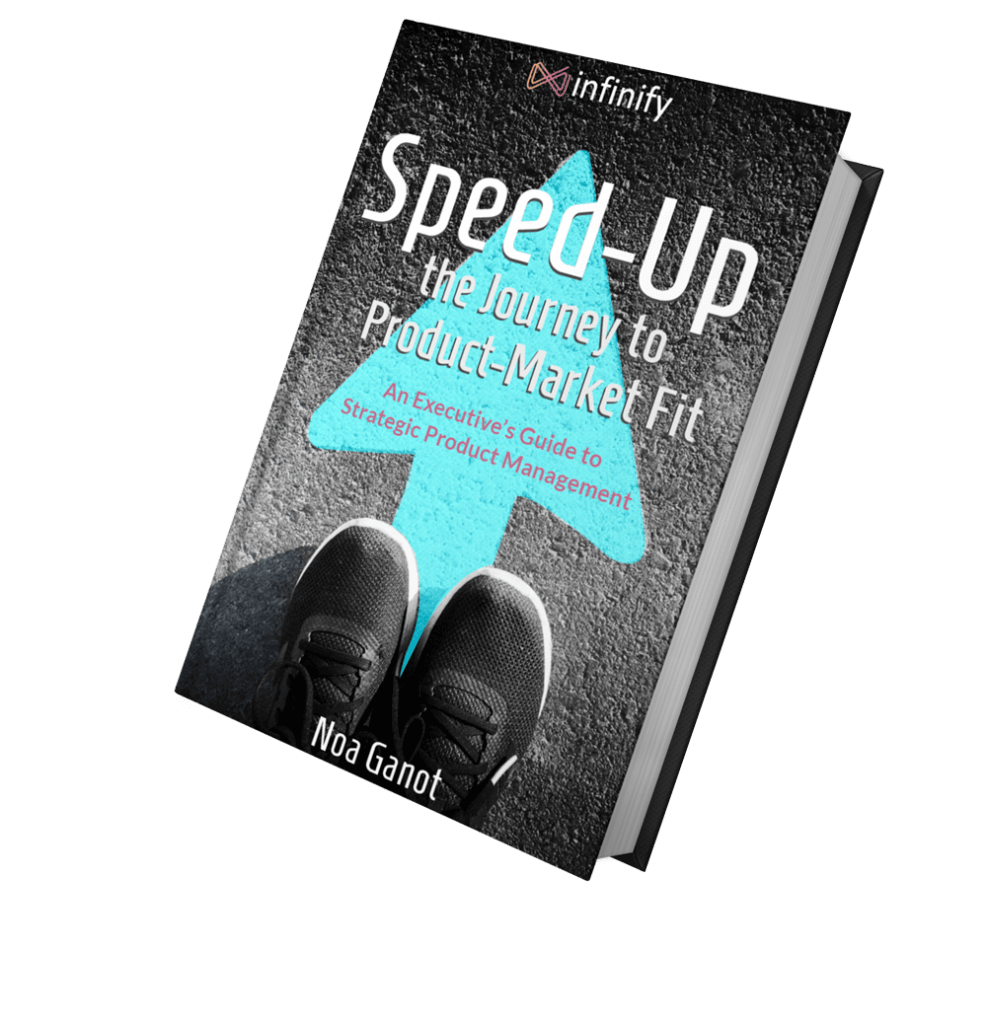When companies ask for my help hiring a senior product leader, they usually want to jump straight to tactics: Where should we look? How do we interview? What questions should we ask?
My answer is always the same: Before we can even start thinking about the process, we need to answer a much more important question: What kind of leader do you actually need?
There’s no universal “great product leader.” The role demands a long list of capabilities that don’t always live in harmony. You need someone who can think strategically, but also own the smallest details. Someone who’s great with people, but just as comfortable with data. Someone who understands user psychology, design, business models, and team dynamics, and knows how to balance them all.
Every product leader has their strengths and weaknesses from within the list above. That’s how it is – nobody’s perfect, and you won’t find a perfect candidate. To move on and make good hiring decisions, the key is to understand what type of leader you and the company need right now. That depends on your stage, your goals, your challenges, and the team around them.
Over time, I’ve found it helpful to think in terms of four archetypes: the Hustler, the Plumber, the Director, and the Connector. Most leaders lean heavily into one or two of these.
These types are personality-related and not experience or seniority-related. They apply whether you are looking for a Director, a VP, or a CPO. They are relevant regardless of the industry the candidate came from, and honestly, they are also relevant for product managers at various levels, not just leaders.
In this article, I’ll walk through each type and explain what they bring, where they shine, and how to know which one is right for you.
Remember that if you don’t know what kind of leader you need, it doesn’t matter how good your hiring process is. You’ll be aiming at the wrong target.

The Hustler
If you’re building an early-stage startup, there’s a good chance you need a Hustler.
Hustlers are the kind of product leaders who don’t wait around for perfect alignment or a full spec. They figure things out as they go. They push through walls, skip unnecessary steps, and use whatever tools or relationships they have to move fast and make progress. Their superpower is momentum. When things stall, they get them moving again.
Hustlers are especially valuable when you’re still searching for product-market fit. That phase requires constant iteration, bold decisions, and a high tolerance for chaos. Hustlers thrive in that environment. They’re resourceful, scrappy, and creative – not in the design sense, but in the “I’ll find a way” sense. They’re not afraid to do things that feel messy, and they rarely get stuck. If something doesn’t work, they quickly try something else.
But it’s not just early-stage startups. Hustlers can also be the right choice when you want to shake things up in a more mature company. If your product team has slowed down or gotten too focused on process over outcomes, bringing in a Hustler can re-energize the team and force fresh thinking. Hustlers don’t accept “this is how we do it” as a good enough reason. They challenge assumptions and bring urgency where it’s missing.
Of course, there are tradeoffs. Hustlers aren’t always the most structured leaders. They can frustrate teams who expect detailed plans, stable processes, or clear role definitions. If you put a Hustler into a highly political organization that values consensus over speed, they’ll likely clash with the culture. They’re also not the right fit when your main challenge is scaling an existing system.
Hustlers are not long-term operators. They’re the spark. And sometimes that spark is exactly what you need.
The Plumber
If the Hustler is what you need to get things started, the Plumber is who you need to keep things running – and growing.
Plumbers are the product leaders who take a company out of startup mode and build the foundations it needs to scale. They’re the ones who look at a chaotic, fast-growing organization and say, “This won’t hold.” Then they start fixing it – not just in the codebase, but across the entire product operation.
What they bring is structure. They define clear processes, roles, and routines. They set expectations, introduce planning cadences, and make sure decisions don’t get lost in Slack threads. They turn gut-feel prioritization into thoughtful roadmaps, and one-off wins into repeatable mechanisms. Importantly, they’re not just process people – they’re alignment people. Plumbers are great at getting teams on board with these new structures and making sure they actually stick.
You bring in a Plumber when the company is growing quickly and things are starting to fall apart. Maybe you’ve added several product teams, but nobody’s really sure who owns what. Maybe engineers are frustrated because priorities keep shifting. Maybe leadership is worried that decisions aren’t being made in a consistent way. A good Plumber will come in, diagnose the operational leaks, and quietly start building the plumbing that will support your next stage of growth.
That might mean introducing better goal-setting (and actually following through). It might mean standardizing how product specs are written or how customer feedback is collected. It might mean changing how product and engineering work together. But whatever it is, it will bring more predictability, consistency, and shared understanding.
The tradeoff, of course, is that Plumbers can sometimes slow things down, especially if you’re still in a phase where speed and improvisation are more important than consistency. Put a Plumber into a team that’s still exploring or constantly shifting direction, and they might get frustrated. Or worse, they might try to systematize something that isn’t ready yet.
But when the chaos starts getting in the way of outcomes, such as when people are burning out, missing context, or duplicating efforts, the Plumber brings the order you need. They’re the ones who build the systems that let you scale without breaking.
The Director
This isn’t about Director as a level but rather as a profession, as in movies or shows.
The Director isn’t focused on what’s happening now. They’re thinking about what’s possible – and where the world is heading.
This type of product leader has a rare gift: they see beyond the company, beyond the customer, even beyond the market. They track how big forces move – cultural, technological, behavioral – and use that understanding to shape the long-term direction of the product and the company. While others focus on what users need today, the Director is asking: Where is the real opportunity? What could this become?
They’re not interested in tweaks or improvements. They want to reframe the game. Not with big declarations or showy presentations – many Directors aren’t natural communicators – but through deep, sometimes quiet thinking that influences the foundations of strategy.
You don’t always understand the Director right away. Their thinking can feel abstract or unfinished. They often operate in metaphors or high-level mental models, and it can take time (and translation) to apply their ideas in practice. But that doesn’t mean they’re unclear – it means they’re ahead. Their mind is three steps into a future most people haven’t started considering yet.
Directors are most valuable when a company is ready to take a leap into a new market, a new business model, or a new phase of growth that requires real rethinking. They help define not just what the company is doing, but why it matters in a broader context. They shape the essence of what’s being built – the soul of the product, not just its function.
But Directors rarely thrive alone. Because they aren’t anchored in the details, they often struggle to connect their thinking back to the day-to-day. This is why they work especially well with a Connector – someone who can bridge the gap between vision and execution, and help others make sense of where the Director wants to go.
Still, without the Director, it’s easy for teams to focus only on what’s visible and urgent. Directors love big and bold moves and are good at spreading the news. They hold a kind of creative authority – not because they demand it, but because they see what others don’t.
The Connector
Connectors aren’t necessarily the most visionary, the most process-oriented, or the most results-obsessed product leaders. But they’re often the ones who make everything else work.
A Connector’s strength lies in bringing people together – not just around a table, but around a shared understanding. They have a deep belief that every person in the room sees something valuable, but no one sees the whole picture. Their job is to help each person express their point of view clearly, then weave those perspectives into a coherent solution everyone can get behind. They are highly analytical and combine radical honesty with great listening.
When a Connector is around, teams stop working in silos. Suddenly, marketing and product aren’t arguing – they’re listening. Sales, tech, operations, and the CEO aren’t pulling in different directions – they’re all anchored to a plan that reflects the reality of their world. The Connector makes that happen not by pushing their own agenda, but by asking the right questions, reflecting back what they hear, and challenging assumptions gently but clearly.
This doesn’t mean they aim for compromise. A good Connector doesn’t just settle for something everyone can live with. They aim for something stronger – a solution that actively benefits from the diversity of inputs. Something that works because it was built with the whole system in mind.
What makes Connectors so effective is that they’re not threatened by disagreement. In fact, they expect it. They know that tension between functions isn’t a problem – it’s a feature. Each group brings different constraints, different goals, and different insights. The Connector’s job is to surface those openly and then guide the team toward a decision that integrates them all.
They’re not always the ones setting the vision or designing the process. But they’re the ones making sure the vision is understood, the process is followed – or skipped, but for a good reason that everyone is aware of, and the outcomes are owned by everyone involved.
If you’ve ever been in a room where everything clicked – where people who usually talk past each other started building on each other’s ideas – you’ve seen a Connector at work.
In high-stakes, high-complexity environments, they’re the glue. The ones who make sure that all the smart people in the room aren’t just smart individually, but collectively brilliant.
No One Type Wins
These four archetypes aren’t levels or labels – they’re lenses. Most people aren’t just one type. In fact, nearly everyone carries a mix: about 50% one dominant type, 30% secondary, 15% third, and 5% last. The order changes from person to person, but the pattern is surprisingly consistent.
That’s why this framework isn’t just useful for understanding others – it’s useful for understanding what you need. When you’re hiring, you can sort the four types into those same buckets and ask yourself: What’s the dominant trait we’re really looking for? What’s the supporting one? What can we live with less of? You can’t hire for everything equally – these traits often come at the expense of one another – but when you define the mix, you’re far more likely to find the right fit.
Thinking in archetypes turns a fuzzy conversation into a focused one. It gives you a shared language for tradeoffs and a clearer picture of the kind of product leader your company actually needs.
Most importantly, it increases the chances that you actually find it.










